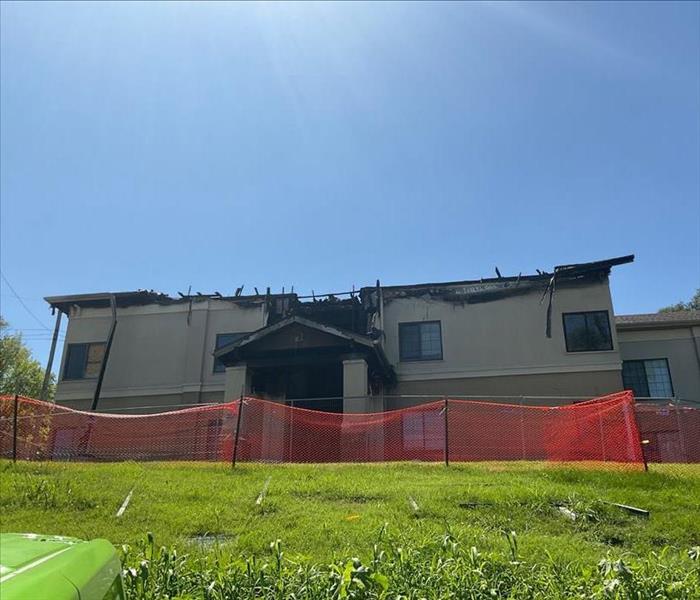Cleaning techniques for different types of fire damage
4/19/2024 (Permalink)
 SERVPRO is dedicated to utilizing advanced methods and technologies to provide efficient and effective fire damage restoration services.
SERVPRO is dedicated to utilizing advanced methods and technologies to provide efficient and effective fire damage restoration services.
At SERVPRO®, we understand that experiencing a fire in your home or business is a traumatic event. Once the flames are extinguished, the road to recovery involves not only rebuilding but also restoring your property to its pre-fire condition. In this blog post, we will discuss essential cleaning techniques for different types of fire damage, providing valuable insights to help you navigate the restoration process effectively.
Assessing the Damage
Before diving into the cleaning process, a thorough assessment of the fire damage is crucial. Different types of fires result in varying residues, such as protein, synthetic, or natural materials. Understanding the nature of the residues is the first step in choosing the appropriate cleaning methods.
Dry Cleaning for Light Residues
For light residues, such as soot from a small kitchen fire, dry cleaning methods can be highly effective. Techniques like dry sponging and vacuuming with HEPA filters help remove loose particles without causing further damage to surfaces.
Wet Cleaning for Moderate to Heavy Residues
Moderate to heavy residues, commonly found in structure fires, require more intensive cleaning methods. Wet cleaning involves using water or cleaning solutions to break down and remove stubborn soot and smoke residues. SERVPRO employs specialized cleaning agents and techniques tailored to the specific type of residue for optimal results.
Ultrasonic Cleaning for Delicate Items
When it comes to restoring delicate items like electronics, jewelry, or intricate decor, ultrasonic cleaning is a game-changer. This method uses high-frequency sound waves to create tiny bubbles that gently lift away contaminants without causing harm to the items.
Thermal Fogging for Odor Removal
Even after visible residues are cleaned, lingering smoke odors can persist. Thermal fogging is a powerful technique that disperses a deodorizing fog to neutralize odors at the molecular level. This method is particularly effective in open spaces and hard-to-reach areas.
Ozone and Hydroxyl Generators for Air Quality
Ensuring indoor air quality is a crucial aspect of fire damage restoration. Ozone and hydroxyl generators are employed to break down and neutralize odorous molecules in the air, promoting a fresh and clean environment.
Navigating the aftermath of a fire can be overwhelming, but with the right cleaning techniques, your property can be restored to its pre-fire state. SERVPRO is dedicated to utilizing advanced methods and technologies to provide efficient and effective fire damage restoration services. If you find yourself facing the aftermath of a fire, trust the experts at SERVPRO to bring your property back to life.





 24/7 Emergency Service
24/7 Emergency Service